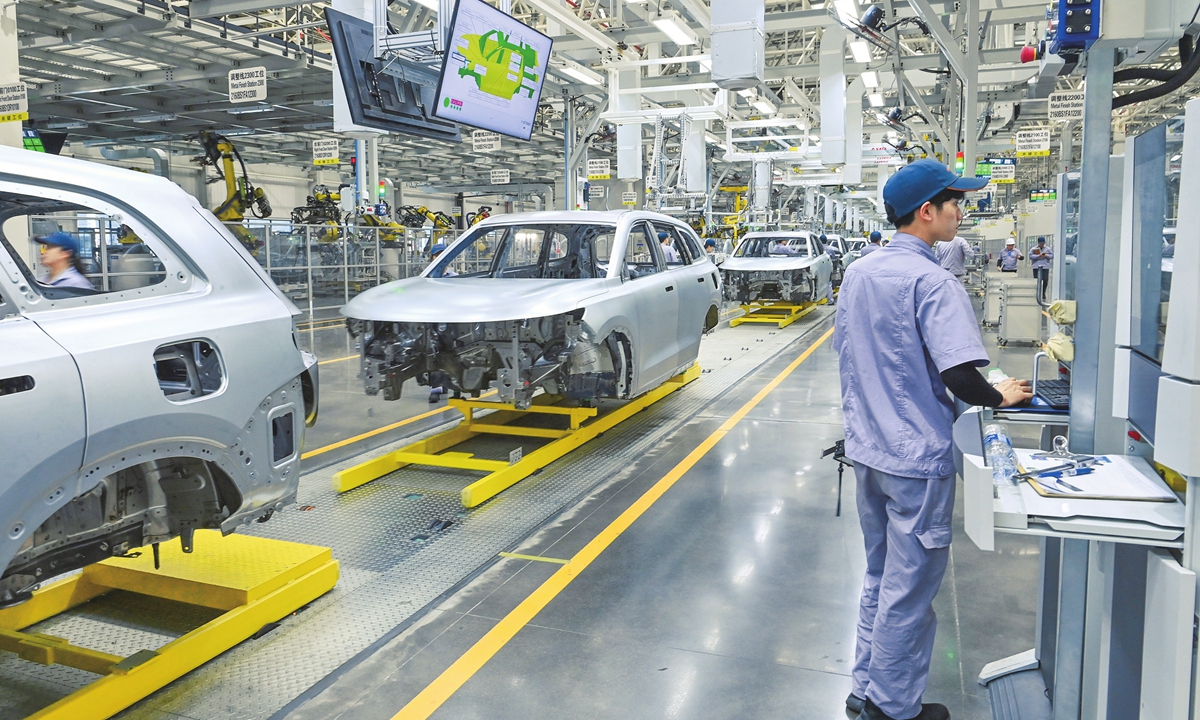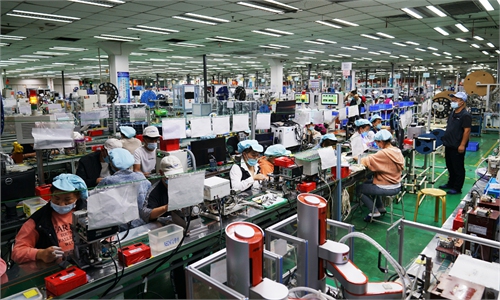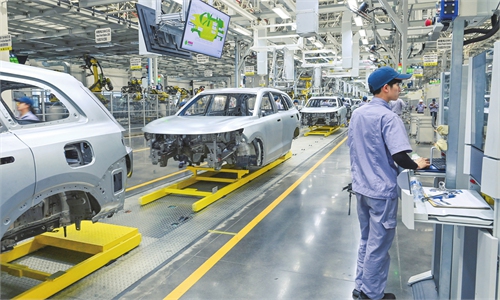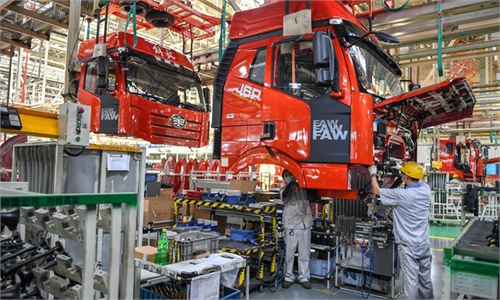PMI for small and medium-sized private enterprises softens to 49.0 in December: Caixin survey

The manufacturing line of a NEV factory in Southwest China’s Chongqing Municipality Photo: VCG
China’s manufacturing activity continued to contract at the end of 2022 as the latest COVID flare-up disrupted factory operations and softened market demand. But manufacturers’ expectations for future output reached highest level since February, mirroring an economic recovery soon, a private survey said on Tuesday.
The Caixin China Manufacturing Purchasing Managers’ Index (PMI) edged down from 49.4 in November to 49.0 in December, signaling a fifth successive monthly decline. A reading above 50 indicates expansion, while a reading below 50 speaks of contraction.
A quicker fall in new business operations weighed on the PMI. Though modest, the latest reduction in sales was the fastest seen in three months, with companies citing relatively softer market demand amid a surge of COVID infections.
Foreign demand for Chinese manufactured goods also fell, reflecting weaker demand abroad, according to the survey.
In line with the trend observed for new orders, companies trimmed purchasing activity at a quicker pace during December. Notably, the rate of decline was the largest seen since April. At the same time, inventories of both purchased items and finished goods continued to drop.
“Both manufacturing supply and demand shrank last month. Fallout from the pandemic was a drag on production and sales, with the sub-indexes for output and total new orders staying below 50 for the fourth and fifth straight months, respectively,” said Wang Zhe, an economist at Caixin Insight Group.
Despite the current contraction, business confidence and optimism for future output improved to its highest level since February, as China started to pivoted to reopening in December from strict anti-COVID measures.
“Overall, the pandemic continued to take a toll on the economy in December. Supply contracted, total demand softened, overseas demand shrank, employment deteriorated, and logistics were sluggish... But optimism in the sector significantly improved thanks to the government’s optimized COVID-19 controls,” Wang said.
Policymakers have made it clear that priority must be given to the recovery and expansion of domestic consumption, which has elevated social expectations and confidence in economic recovery, but various policies need to work in tandem to stabilize the job market and increasing workers’ disposable income, Wang added.
Analysts project that the Chinese economy will rebound in the second quarter of 2023, and the PMI reading is expected to stage comprehensive improvement in January as multiple local governments are accelerating efforts to revive consumption and services.
Wen Tao, an expert from the China Logistics Information Center, said that, following an infections peak, the economy will gradually return to the normal track of growth, with the industrial supply chain resuming smooth operation and manufacturing activity returning to pre-pandemic levels.
The Caixin PMI was in line with official data released by the National Bureau of Statistics on Saturday which showed the manufacturing index declined to 47.0 in December, down 1.0 percent from November, the lowest level since March 2020.
The Caixin PMI mostly tracks small and medium-sized private-owned enterprises, while the official manufacturing PMI largely focuses on large state-owned firms.
Global Times



